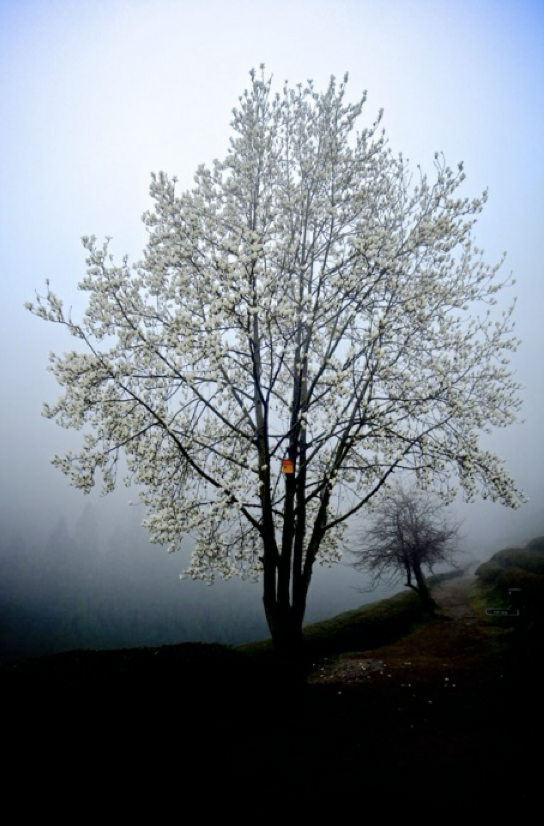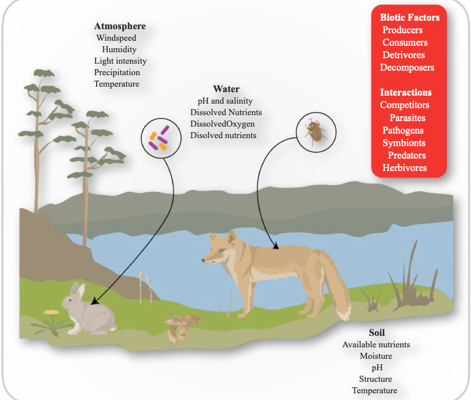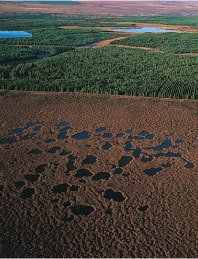2.1.2: Biotic and Abiotic Conditions
Definition: The habitat is the environment in which an species normally lives
All habitats contain both Biotic and abiotic factors that have an influence on all organisms.
The components of an ecosystem
Ecosystems are made up of the interactions between the living and non-living components within them.
It is impossible to think of an ecosystem without including these interactions

The living components of an ecosystem are known as the “biotic factors” – living biological factors that influence the other organsims or environment of an ecosystem.
This is a lot more than just listing the plants, animals or micro-organisms found in an ecosystem. It includes the roles played by the organisms.
Biotic factors interact as : Producers, consumers, detrivores, decomposers, parasite, host, predator, competitor, herbivore, symbiant and pathogen.
A tree in a woodland is a producer providing the basic unit of energy for the rest of the ecosystem. But at the same time it competes for light with other trees and may be the host to parasitic plants such as mistletoe or decomposing fungi. During the annual cycle in the wood, the tree will at times take water and mineral nutrients from the soil and at others return nutrients from fallen wood and leaves.
The Physical and Chemical components of an ecosystem are called the “abiotic factors” and include:

- The atmosphere
- Climate and water
- Soil structure and chemistry
- Water chemistry
- Seasonality
These factors operate at a broad scale but within ecosystems smaller component abiotic factors also work.
The relative humidity within the bowl of an oak tree is higher than that of a woodland as a whole. This provides the physical and chemical conditions needed for a community of mosses, lichens and ferns to develop.
In a very simplistic form it is the availability of suitable abiotic environment that provides the conditions for a distinct biotic community to exist. Importantly thought, the biotic community can greatly influence and even change the abiotic one.
Commercial Forestry in parts of Scotland illustrates this well.

Until the 1970’s large areas of Scottish Blanket Bog was viewed beyond the reach of commercial forest operations. It was to wet for Sitka spruce the predominant cash wood crop to grow and too expensive to drain.
Then it was discovered that if a “nurse” crop of Lodgepole pine was planted ahead of the Sitka, even though the pines would eventually die in the very wet conditions, they would dry the soil enough to allow Sitka to take hold.
Along with this the drying of the area and closing in of the canopy with trees planted tightly in rows would prevent continued growth and accumulation of sphagnum moss. This in turn aided the drying process.
Many different abiotic factors an animal or plant species and also interact and change with time themselves.
E.g. temperature is dependent upon:
solar radiation, wind speed, time of year, time of day, altitude and aspect.
Temperature affects water loss from organisms and respiration, and for plants the rate of photosynthesis. Changes in temperature affect relative humidity and evaporation from water bodies and soils.
